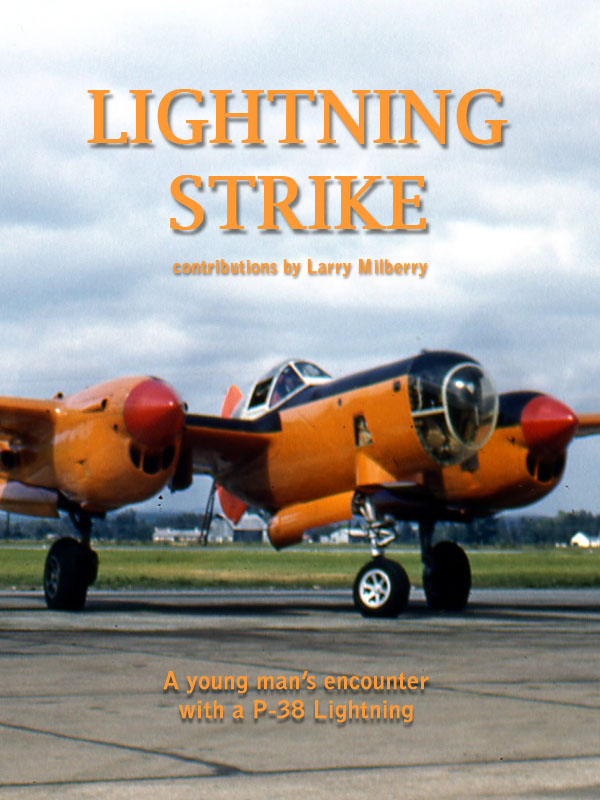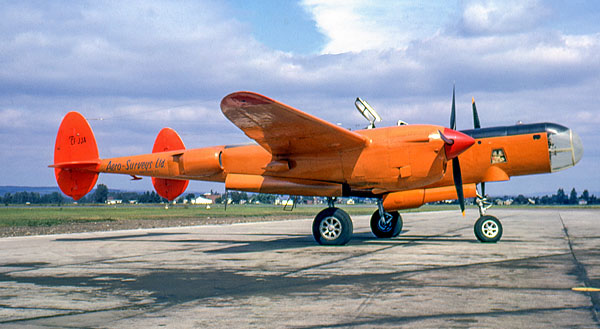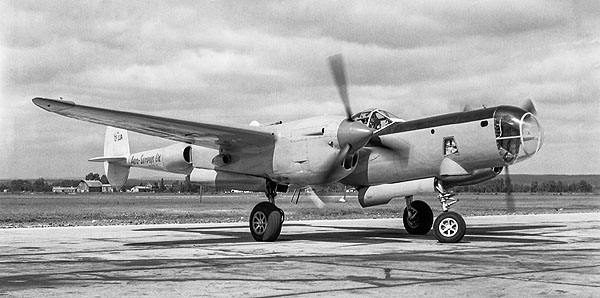

My first visit to The Lakehead was on September 3, 1961. This was a stopover on my TCA flight to Winnipeg. For this I had saved my pennies for a year - the 1-way fare set me back $50, a
fair fortune for a high school kid. I took the morning flight (TCA F59 Viscount CF-TGR 07:55 to 10:00) first to Fort William, where I got off to spend a few hours before boarding the
afternoon leg (TCA F53 Viscount CF-THX 21:45 to 11:25) to Winnipeg.
The day was mainly overcast, but the airplane spotting was above average at Fort William. At the airport I photographed such rarities as Superior Airways Lockheed L.12A CF-EPF, a BT-13 that
Superior had converted for the fish hauling business, and Twin Bonanza CF-LNP. After covering the general scene, I hitchhiked to Superior's seaplane base. Here I met Superior's famous O.J.
Weiben, who let me wander around with my camera. By this time there was a low ceiling in rain, so I was getting a bit impatient. Then something revived my spirits - a roar in the clouds of
what just had to be a WW2 fighter - the vision of a Spartan Mosquito got me going.
I hustled back to the airport to find my suspicions not far off - parked in front of the terminal was a bright orange P-38 Lightning. Hustling across the tarmac, I fired off a few frames,
including with my Kodak Pony loaded with the one roll of Kodachrome I could afford for this trip. The P-38 pilot was busy organizing his kit, but friendly enough to answer a few questions.
Far better, when I asked if he'd be game to fire up his engines for a photo op, he was good for that - could you imagine a scenario like that in 2012!
The aircraft was CF-JJA of Vancouver-based Aero Surveys. Modified for high level photography, 'JJA was heading for Toronto from where Kenting Aero Surveys had a job for it in Argentina. So
that made this Lakehead side trip one of my more interesting. Later that day I pushed on to Winnipeg, then spent the next nine days hitchhiking back to Toronto, stopping at many airports
and seaplane bases along the way.

As Larry wrote on his blog, "In any such a trip, we kids were lucky to be able to afford so much as a single role of Kodachrome. The price in the late 1950s hovered around $10 per roll, so shooting colour was a luxury. But I knew that this P-38 was well worth a few frames from my "36er" of Kodachrome."
(L. Milberry, Canav Books)

(L. Milberry, Canav Books)

Even in black and white, the long-nose Lightning still made for an interesting subject.
(L. Milberry, Canav Books)
What Larry had indeed stumbled upon was in fact, a one-of-a-kind Lightning with a nose so long it could rival Pinocchio's protruding proboscis.
Originally built for the USAAF as a P-38L-5-LO (construction number 422-8209, AAF serial number 44-27205), this particular Lightning had been purchased by Fairchild Aerial Surveys back in
1947. It was Fairchild who installed the prominent nose, along with a small radiator that was connected to one of the engine's glycol return lines. This arrangement drew heat off the
engine's coolant and warmed both the pilot in the cockpit and the camera operator in the nose.
In 1956 N34992, as it was then known, was exported to Canada where it flew with Vancouver, BC's Aero-Surveys Ltd. under the Canadian registration of CF-JJA. Later, when Larry captured the
P-38 in Fort William (now Thunder Bay), it was its way to Argentina, where Kenting had its South American office. According to one source the Lightning entered the Argentinian registry as
LH-HIV, while most claim it was LV-HIX (LV-HIX is correct as all Argentinian registration begin with LV). Apparently it suffered a forced landing after taking off from, Ezeiza, Argentina
sometime around 1964.
References:
Canav Books blog June 29, 2012
P-Screamers, the history of the surviving Lockheed P-38 Lightnings
www.warbirdregistry.org
www.1000aircraftphotos.com
www.warbirdinformationexchange.org
Argentinian article about the Lightning
A. Kevin Grantham
Pictorial Histories Publishing Co., Inc.
Missoula, Montana 1994